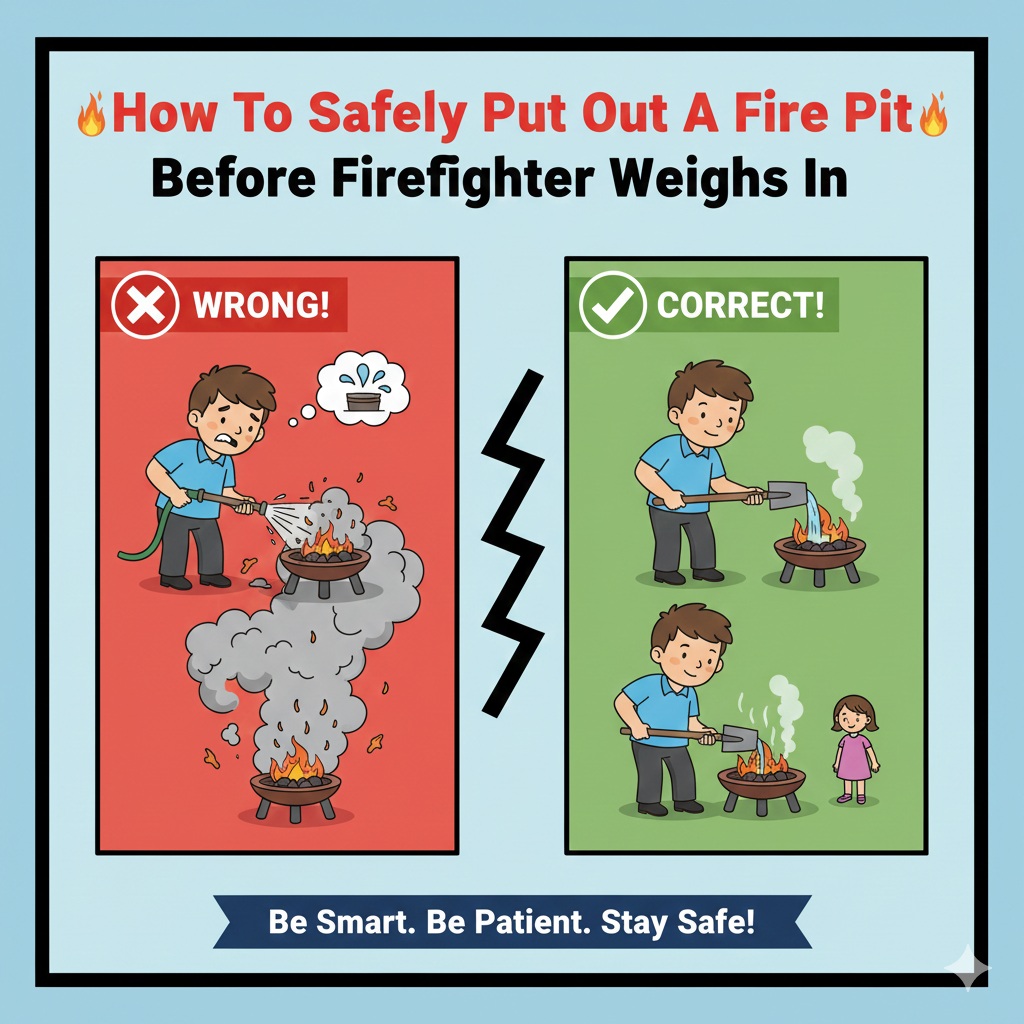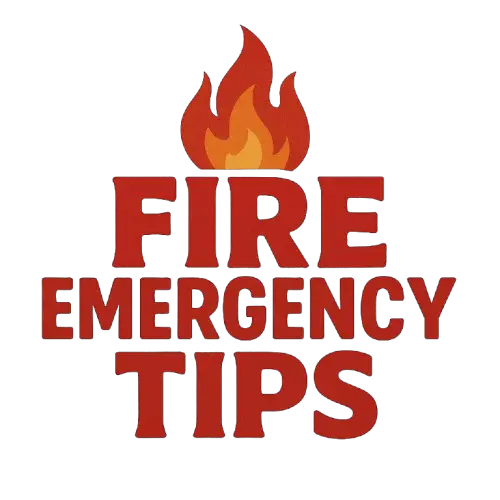
As a seasoned firefighter, I’ve seen my fair share of fire pit mishaps. Knowing how to safely put out a fire pit is crucial to prevent accidents and ensure a fun and worry-free experience. In this article, I’ll share expert tips on extinguishing a fire pit properly.
From choosing the right extinguishing method to understanding the importance of water quantity, there are key factors to consider when putting out a fire pit. I’ll delve into these details and provide you with practical advice on how to handle various types of fire pit fires. Stay tuned to learn how you can enjoy your fire pit responsibly and safely.
Key Takeaways
- Choose the Right Extinguishing Method:Water, fire extinguisher, sand or dirt, fire blanket, and professional help are effective methods.
- Water, fire extinguisher, sand or dirt, fire blanket, and professional help are effective methods.
- Importance of Water Quantity: Sufficient water quantity is crucial to fully extinguish the fire and prevent re-ignition.
- Sufficient water quantity is crucial to fully extinguish the fire and prevent reignition.
- Handling Different Types of Fire Pit Fires:Different fires like wood, gas, oil, and electrical require specific extinguishing techniques for safety.
- Different fires like wood, gas, oil, and electrical require specific extinguishing techniques for safety.
- Ensuring Safety and Responsibility: Always have a fire extinguisher or water nearby, avoid flammable liquids, and follow fire safety guidelines diligently.
- Always have a fire extinguisher or water nearby, avoid flammable liquids, and follow fire safety guidelines diligently.
Choose the Right Extinguishing Method
When it comes to putting out a fire pit, choosing the right extinguishing method is crucial to ensure a safe and effective outcome. Here are some key methods to consider:
- Water: Using water is one of the most common and effective ways to extinguish a fire pit. Make sure to pour water gradually to avoid creating a lot of steam which can be dangerous. Ensure that there is enough water to fully put out the fire.
- Fire Extinguisher: Having a fire extinguisher nearby is a smart safety measure. Make sure to use the correct type of extinguisher for the fire burning in your fire pit.
- Sand or Dirt: If water is not readily available, using sand or dirt to smother the fire can also be effective. Spread the sand or dirt over the flames until they are completely covered.
- Fire Blanket: A fire blanket can be used to smother small fires by cutting off the fire’s oxygen supply. Ensure you have the right type of blanket for the fire you are dealing with.
- Professional Help: For larger fires or if you are unsure about how to safely extinguish the fire, it is best to call the fire department for assistance.
Remember, safety should always be the top priority when extinguishing a fire pit. Choose the method that is most appropriate for the situation and never hesitate to seek professional help if needed.
Importance of Water Quantity
When dealing with a fire pit, water is a valuable resource for extinguishing flames effectively. It’s essential to understand the significance of using the right amount of water to ensure the fire is completely out.
Adding enough water to the fire pit is crucial as it helps smother the flames and cools down the burning materials. This process prevents reignition and reduces the risk of the fire spreading or causing any harm.
One common mistake is not using an adequate amount of water to put out the fire pit. Inadequate water can lead to rekindling of flames, posing a threat to safety. Ensure a sufficient quantity of water is used to extinguish the fire entirely.
In some cases, the fire department may need to be called for assistance with larger fires. Remember, when in doubt, it’s always best to seek professional help to ensure the fire is safely and effectively extinguished.
Handling Different Types of Fire Pit Fires
When it comes to handling different types of fire pit fires, knowledge is key. Here are some essential tips for dealing with various scenarios:
- Wood Fire: For a typical wood fire pit, I recommend using a fire extinguisher or sand to smother the flames. Make sure the fire is completely out before leaving it unattended.
- Gas Fire: Gas fire pits require a different approach. Turn off the gas supply first. Then, use a fire extinguisher designed for gas fires or baking soda to put out the flames.
- Oil Fire: In the case of an oil fire in a fire pit, never use water as it can cause the flames to flare up. Instead, use a fire blanket or a class K fire extinguisher specifically designed for kitchen fires.
- Electrical Fire: If you encounter an electrical fire in your fire pit, disconnect the power source if safe to do so. Use a CO2 fire extinguisher or a dry chemical fire extinguisher to put out the fire.
Remember, always prioritize safety when dealing with different types of fire pit fires.
Ensuring Safety and Responsibility
When it comes to putting out a fire pit fire, safety and responsibility should be top priorities. As a firefighter, I’ve seen firsthand the consequences of improper extinguishing techniques. To ensure safety:
- Always have a fire extinguisher or water source nearby.
- Avoid using flammable liquids to control or extinguish the fire.
- Never leave a fire pit unattended.
Responsibility plays a crucial role in fire safety:
- Properly dispose of ashes to prevent flare-ups.
- Follow local regulations and guidelines for fire pit usage.
- Educate yourself and others on fire safety tips.
Remember, taking the necessary precautions and acting responsibly can make a significant difference in preventing accidents and ensuring a safe environment for everyone.
Conclusion
Ensuring the safe extinguishing of a fire pit is crucial to prevent potential hazards. By using the right amount of water and understanding the appropriate methods for different types of fires, we can maintain a secure environment. Remember to have a fire extinguisher or water source nearby, avoid flammable liquids, and never leave a fire pit unattended. Proper disposal of ashes and staying informed about fire safety tips are key to preventing accidents. Let’s prioritize safety and responsibility when dealing with fire pits to enjoy them safely.
Frequently Asked Questions
Why is it important to use the correct amount of water to extinguish a fire pit?
Using the correct amount of water ensures the fire is fully extinguished, reducing the risk of reignition and preventing potential hazards.
When should you call the fire department for a fire pit incident?
Call the fire department for larger fires that cannot be safely extinguished with water or for emergencies where the fire is out of control.
How should you extinguish different types of fire pit fires?
Extinguish wood fires with water, gas fires by cutting off the gas supply, oil fires with a fire extinguisher, and electrical fires by cutting off the power source.
What safety precautions should you take when using a fire pit?
Always have a fire extinguisher or water source nearby, avoid flammable liquids, never leave the fire pit unattended, and follow local regulations for ash disposal.
How can you prevent fire pit accidents and promote safety?
Educate yourself and others on fire safety tips, practice responsible fire pit usage, and maintain a safe environment by following recommended safety measures.
